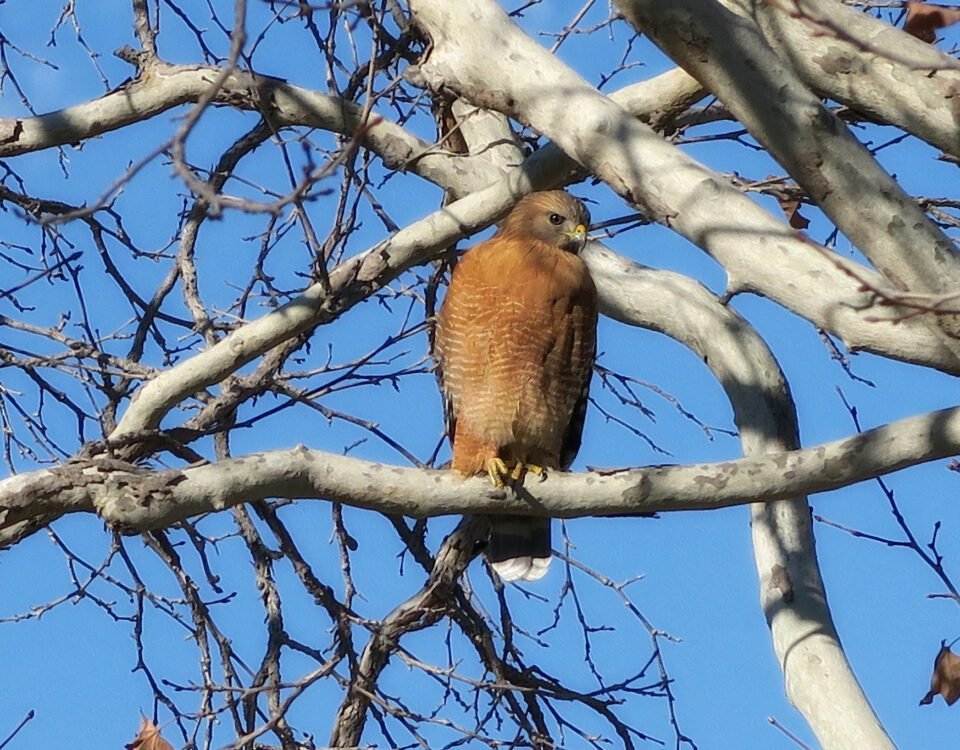


Why Do Birds Eat Their Babies? How To Prevent It?
September 15, 2023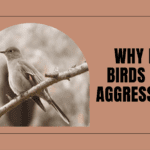


Why Do Birds Get Aggressive? What You Need to Know?
September 16, 2023Birds come in all shapes and colors; some have ordinary eyes, and some have uniquely bright red eyes that catch our attention. These red eyes are beautiful, but have they ever left you questioning ‘why do some birds have red eyes? ‘ Well, you’re not alone!
In this article, we’ll delve into the fascinating world of bird anatomy and explore the reasons behind the enchanting crimson gaze of these feathered creatures.
Also Read: Why Do Birds Walk Funny? Different Types of Bird Walk
Exploring the Unique Anatomy of Red-Eyed Birds
One of the most striking features of some birds is their vibrant red eyes, which result from specialized pigments and structures within their eyes. Red-eyed birds possess a unique anatomy that distinguishes them from other avian species. Let’s explore some!
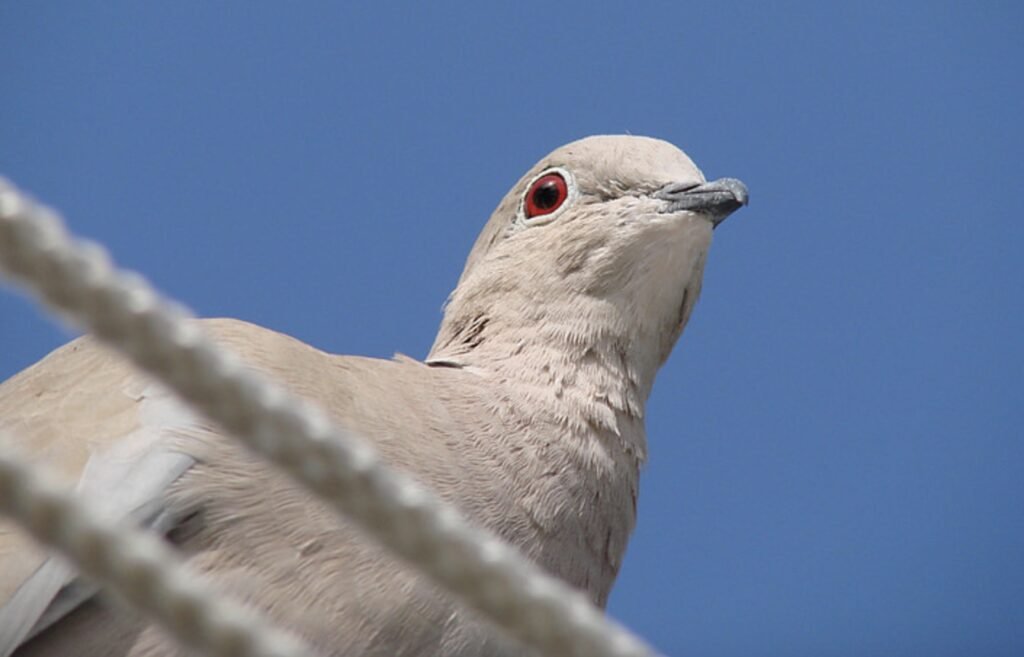

Red Eyes Pigeon
- The brightly colored eyes of many bird species result from the presence of other pigments, such as pteridines, purines, and carotenoids, which are deposited in the iris and retina of the eye.
- The anatomy of red-eyed birds also includes specific adaptations in their eye structures. For instance, these birds often have more enormous eyes than other species, allowing them to gather more light and enhance their vision in low-light conditions.
- Additionally, red-eyed birds possess a higher density of photoreceptor cells in their retinas, particularly in the fovea area, which is responsible for sharp central vision. This adaptation gives them excellent visual acuity and helps them detect fine details in their surroundings.
- Another exciting aspect of the anatomy of red-eyed birds is the presence of a specialized structure called the pecten. The pecten is a comb-like structure located in the back of the eye, near the retina. It plays a crucial role in nourishing the retina by supplying oxygen and nutrients.
- In addition to their eye anatomy, red-eyed birds exhibit unique plumage features. Many species with red eyes also have vibrant and colorful feathers, which serve various purposes, such as attracting mates or camouflaging in their natural habitats.
- The combination of red eyes and colorful plumage creates a visually striking appearance, making these birds stand out among their counterparts.
The Reasons Behind Birds’ Red Eyes
Red eyes are a fascinating feature that has intrigued scientists and bird enthusiasts for years. The surprising reason behind their red eyes lies in the unique anatomy of birds’ eyes.
1. Presence of Pigments
Birds have red eyes due to the presence of pigments. Carotenoids are organic pigments responsible for the red, orange, and yellow colors in various parts of a bird’s body, including the eyes.
These pigments are obtained through the bird’s diet, primarily from consuming fruits, vegetables, and insects rich in carotenoids. The carotenoids are then deposited in the bird’s eye tissues, giving them a red appearance.
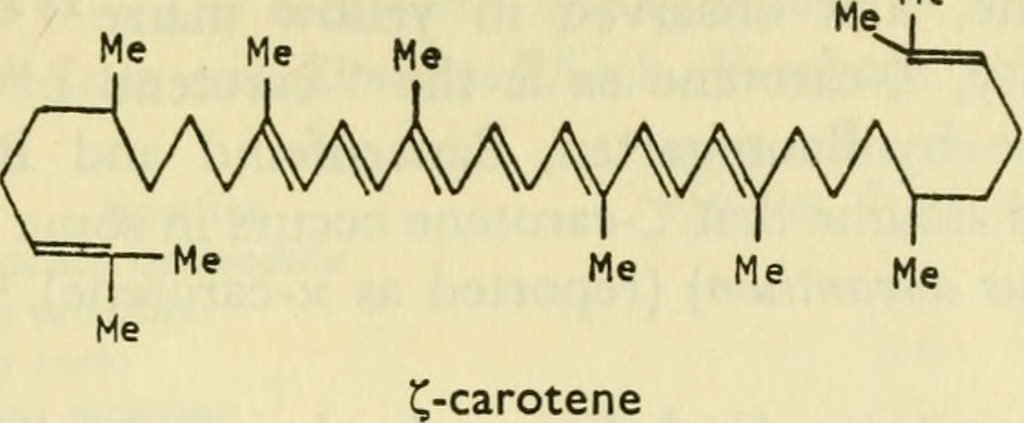

Carotenoids
Pteridines, on the other hand, are a group of pigments responsible for the red coloration in the eyes of some bird species. The bird’s body synthesizes these pigments not obtained through their diet.
The specific pigments in a bird’s eyes can vary among species. Some birds may have a combination of carotenoids and pteridines, while others may have only one type of pigment.
Also Read: Can Birds Have Milk? Different Types of Milk Analyzed!
2. Blood Vessels
The red coloration results from the blood vessels being close to the eye’s surface, making them more visible. These blood vessels supply oxygen and nutrients to the eye tissues, ensuring the proper functioning of the eyes.
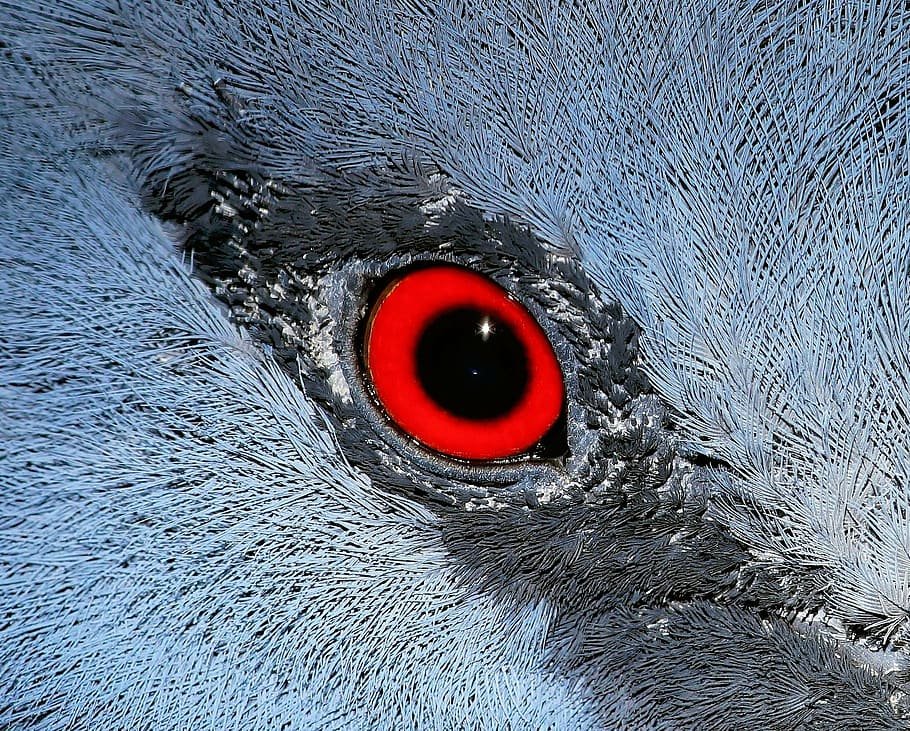

Blood Vessels Bird’s Eye
The intensity of the red color can vary depending on the concentration of hemoglobin and the thickness of the blood vessels in the eyes.
The blood vessels also nourish the eyes, delivering oxygen and nutrients required for optimal vision. The red coloration of the eyes can also serve as a visual signal during courtship displays or territorial disputes, indicating the bird’s health and vitality.
3. Genetic Factors
Genes play a crucial role in determining the coloration of bird eyes, including red pigmentation. In the case of red eyes, a specific gene variant may be responsible for the production of red pigments in the iris.
This gene variant influences the synthesis and distribution of pigments, resulting in the characteristic red coloration. Therefore, the presence of red eyes in birds can be attributed to the expression of specific genes.
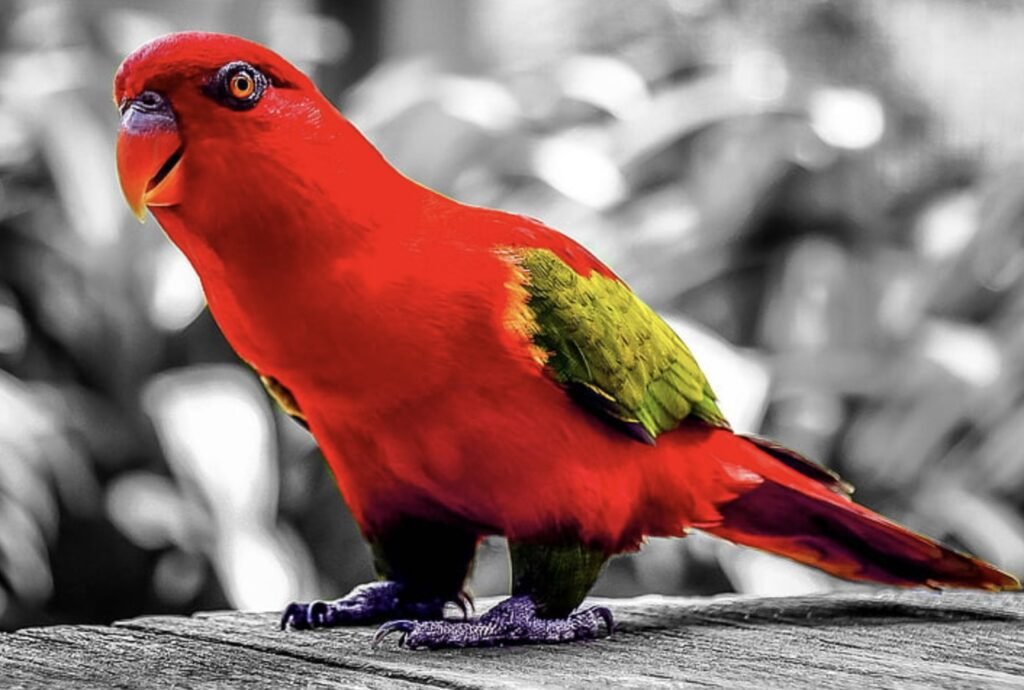

Bird Genetics
The inheritance of red eyes in birds follows Mendelian genetics. This means that the presence of red eyes can be passed down from generation to generation through the transmission of specific genes.
If both parent birds possess the gene variant responsible for red eyes, there is a higher likelihood that their offspring will also exhibit red eyes.
Also Read: Why Does My Parrot Lunge At Me? Specific Parrot Species Guide
4. Melanin Levels
Melanin is a pigment that is responsible for the coloration of various tissues in birds, including their feathers, skin, and eyes. Birds with dark-colored eyes, such as black or brown, have a higher concentration of melanin in their eye tissues.


Melanin Levels in Bird
On the other hand, birds with red eyes have a lower concentration of melanin or lack it entirely in their eye tissues. This lack of melanin makes the underlying blood vessels in the eyes more visible, giving the eyes a reddish appearance.
Understanding the level of melanin in different birds and how it correlates to their eye color can provide a clearer picture of this phenomenon. Further, it gives an insightful comparison and a better understanding of bird anatomy.
| Bird Species | Melanin Level | Eye Color |
|---|---|---|
| Pigeons | High | Orange or Yellow |
| Doves | Medium | Blue or Green |
| Albino birds (various species) | None/Low | Red |
| House Sparrows | High | Brown |
| Hawks | High | Yellow |
| Owls | Medium | Yellow or Green |
| Canaries | None/Low | Red |
5. Social Behavior
Another possible reason for birds’ red eyes is related to their social behavior. Many bird species use visual signals to communicate with each other, and the red coloration of their eyes could play a role in this communication.
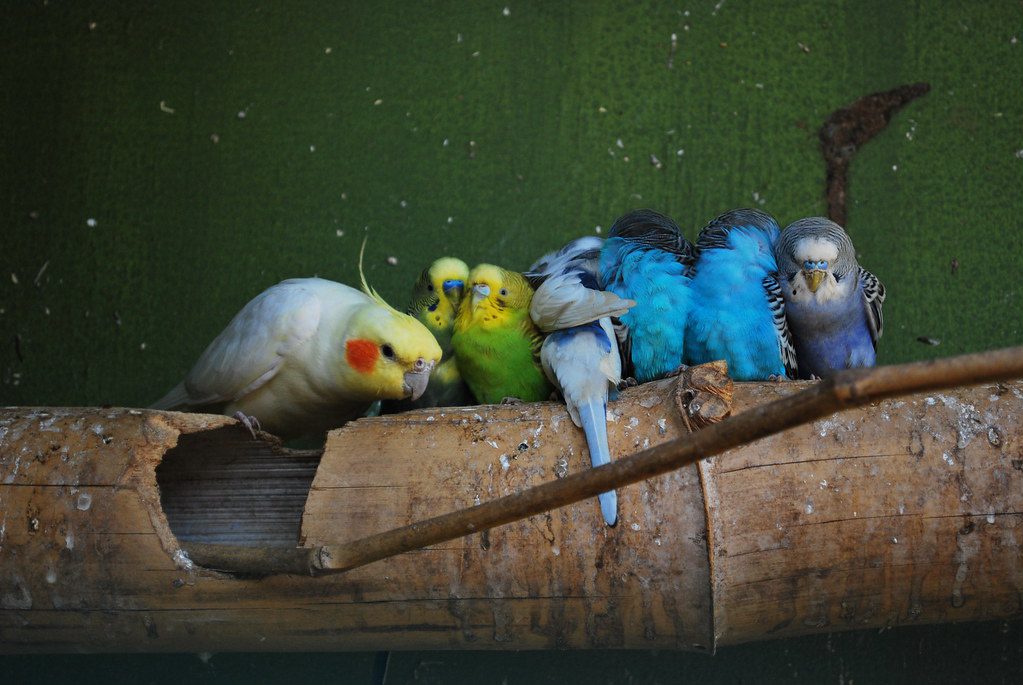

Bird Social Behaviour
The vibrant red eyes may serve as a visual cue, conveying information about the bird’s health, age, or reproductive status. By having red eyes, birds may be able to attract mates, establish dominance, or signal their readiness to breed.
This hypothesis suggests that the red eyes of birds have evolved as a form of visual communication within their species.
6. Possible Infections
Red eyes in birds can be a symptom of various infections, including viral, bacterial, or fungal infections. When a bird’s immune system is compromised, it becomes more susceptible to these infections, leading to inflammation and redness in the eyes.
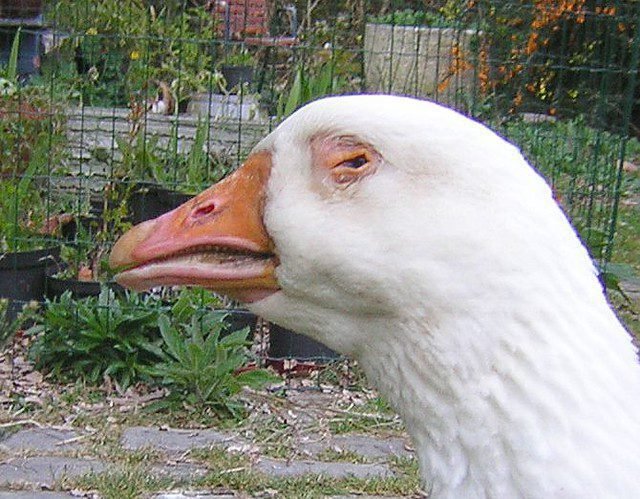

Bird Infected Eye
In some cases, the redness may be accompanied by other symptoms such as discharge, swelling, or changes in behavior. It is important to note that red eyes alone may not always indicate an infection, as there can be other causes, such as allergies or irritants.
Conjunctivitis
Conjunctivitis, also known as pink eye, is an inflammation of the conjunctiva, the thin membrane that covers the front surface of the eye and lines the inner eyelids.
Conjunctivitis can be highly contagious among birds, so it is crucial to isolate infected individuals and practice good hygiene to prevent the spread of the infection.
Avian Pox
Another infection that can lead to red eyes in birds is avian pox. Avian pox is a viral disease affecting various bird species, including wild and domestic birds.
It is characterized by the formation of wart-like growths on the skin, mucous membranes, and around the eyes. These growths can cause irritation and inflammation, resulting in redness and swelling of the eyes.
It is important to note that avian pox can have different strains, some of which primarily affect the eyes, while others may affect other body parts.
Respiratory Infections
These infections can result from various pathogens, including bacteria, viruses, or fungi. When the respiratory system is affected, it can lead to inflammation and congestion in the nasal passages and sinuses, which can extend to the eyes.
This can cause redness, discharge, and discomfort in the affected birds. Respiratory infections can be particularly concerning in birds, quickly spreading within a flock and leading to severe health issues.
Treatments
Possible treatments for infections in birds with red eyes can vary depending on the specific cause of the infection. It is important to consult a veterinarian specializing in avian medicine to accurately diagnose the underlying issue and determine the most appropriate treatment plan.
- Providing supportive care such as providing a clean and stress-free environment, ensuring proper nutrition, and maintaining good hygiene practices
- In cases where bacterial infections cause red eyes, antibiotics may be prescribed. The specific antibiotic and dosage will depend on the type of bacteria involved.
- Antifungal medications may be prescribed if the red eyes result from a fungal infection. These medications can help eliminate the fungal growth and alleviate the associated symptoms.
- In the case of viral infections, antiviral drugs may be used to help manage the symptoms and reduce the severity of the infection.
However, it is crucial to remember that self-diagnosis and self-medication can be dangerous for birds. Seeking professional help at the earliest signs of infection is essential to ensure our tiny friend’s well-being and increase the chances of successful treatment.
Cute Read:Why Are Birds So Cute? 10 Reasons Why Birds Are Cutest
Bird Eyes and Their Evolution
The evolution of bird eyes can be traced back millions of years, and it is believed that their unique characteristics have developed due to various environmental and behavioral factors.
One of the key features of bird eyes is their exceptional visual acuity. Birds have a higher density of photoreceptor cells in their retinas than humans, allowing them to perceive fine details and colors with great precision.
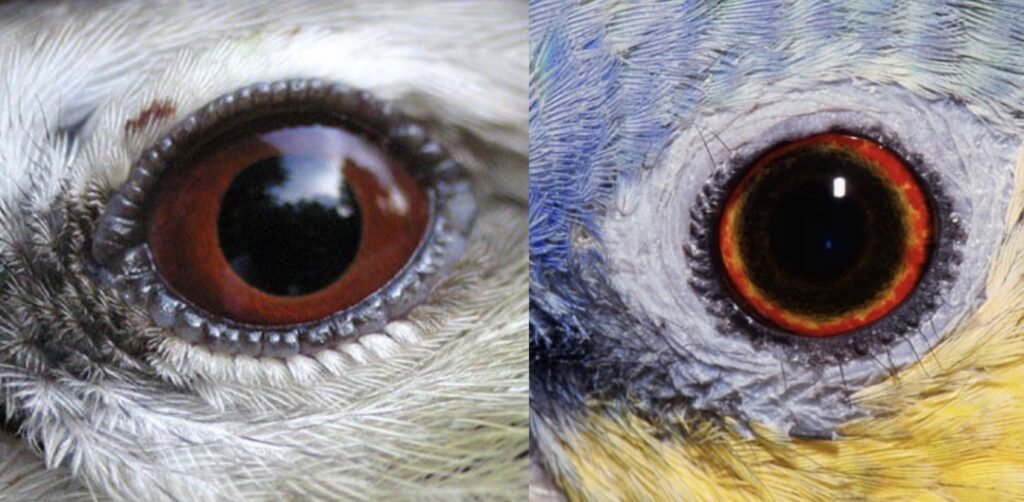

Different Bird Eyes
This adaptation is thought to have evolved in response to the need for birds to locate food sources, navigate through complex environments, and detect potential predators.
Another exciting aspect of bird eyes is their ability to perceive ultraviolet (UV) light. While humans cannot see UV light, many bird species can detect this part of the electromagnetic spectrum.
The evolution of UV vision in birds has likely been driven by sexual selection and the need to accurately assess the health and quality of potential mates.
Interpreting Different Eye Colors in Birds
When you look into a bird’s eyes, you’re not just seeing a reflection of the world around you. You’re also getting a glimpse into the bird’s biology and evolution. Different colors can mean different things, and interpreting these signals can give us valuable insights into the lives of our avian friends.
| Eye Color | What it Implies |
|---|---|
| Red | Typically observed in species that are active during the day. The red color comes from a pigment called ‘astaxanthin’. It might serve to reduce glare and improve focus. |
| Yellow | Commonly found in birds of prey, possibly to provide better contrast and sharper vision while hunting. |
| Black/Brown | Generally seen in nocturnal species. Dark eye color may aid in reducing the amount of light entering the eye, thus protecting the bird’s vision in low-light conditions. |
| Blue | Blue eyes in birds are rare and are not fully understood. Some studies speculate that they may have a role in camouflage or mate selection. |
Remember, these color implications are general observations and can vary among species.
Bird Species Known for Red Eyes
Certain bird species are particularly notable for their fiery gazes, establishing a distinct identity among the avian kingdom. Whether it’s the haunting red eyes of the Eurasian Collared Dove or the mesmerizing allure of the American White Ibis, these species truly stand out.
Eurasian Collared Dove
The Eurasian Collared Dove, native to Europe and Asia, has deep red eyes and reddish feet. This species’ striking visual attribute is often a subject of fascination among bird enthusiasts.
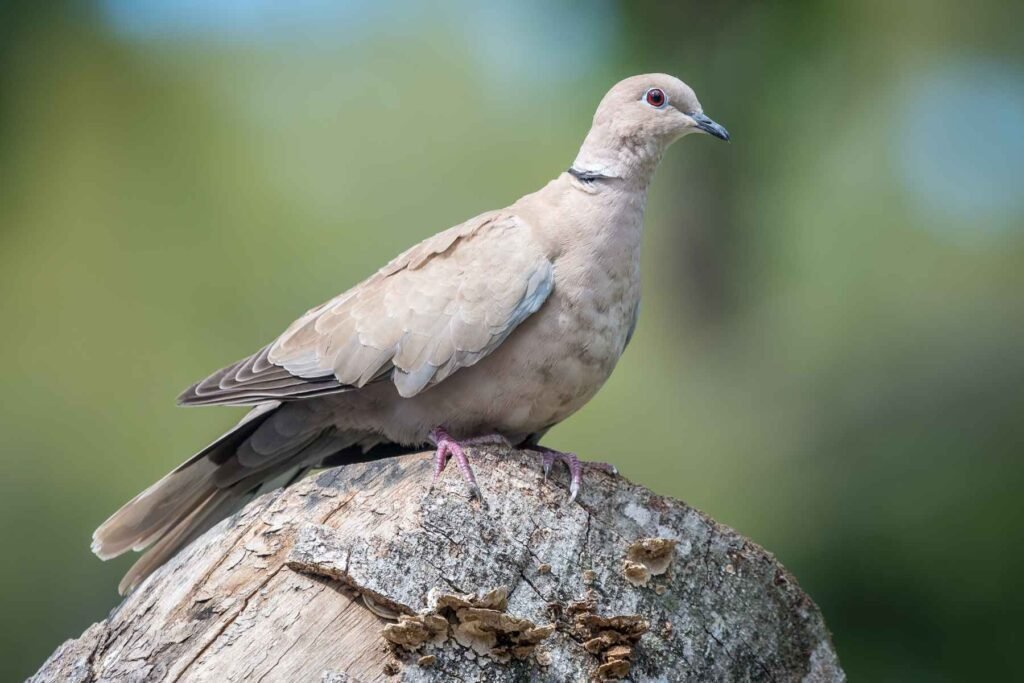

Eurasian Collared Dove
Red-eyed Dove
This medium-sized dove in parts of Africa has a reddish-brown plumage with a distinctive red-eye ring. The red eye ring is thought to play a role in species recognition and mate selection.
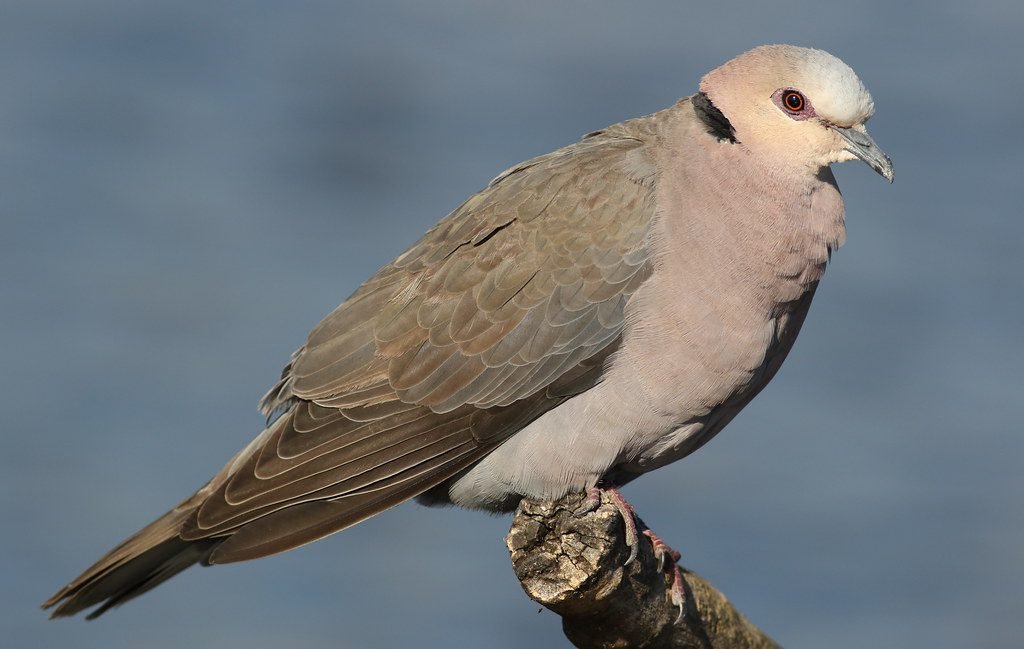

Red Eyed Dove
By observing the red eye ring, doves can quickly identify members of their own species, which is essential for successful mating and reproduction.
American White Ibis
Native to the coastal regions of the southern United States, the American White Ibis demands attention with its all-seeing, crimson-red eyes. Its red eyes, coupled with a curved, red bill and white plumage, make it an extraordinary sight.
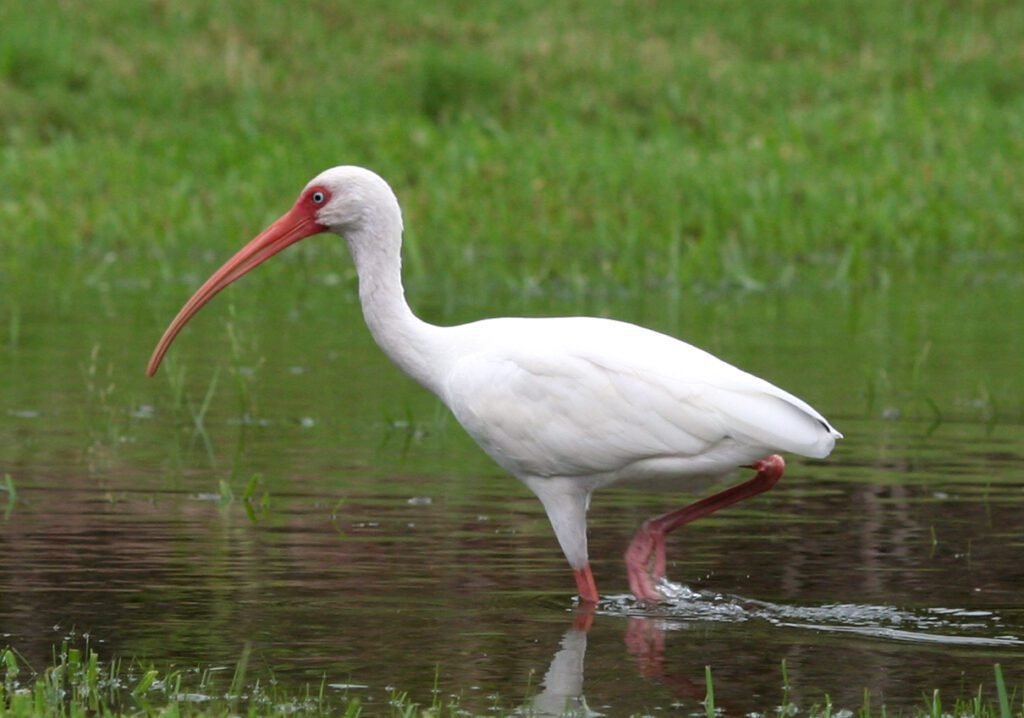

American White Ibis
Reddish Egret
The Reddish Egret, a North American native, is named for its reddish plumage, but the bird’s deep, red eyes truly set it apart. The red eyes of the Reddish Egret contribute to this bird’s dramatic and unforgettable impression on observers.


Reddish Egret
Red-eyed Bulbul
This medium-sized songbird has a distinctive red-eye ring, giving it a unique appearance. The bright red eyes of the Red-eyed Bulbul are a key feature that helps identify this species.
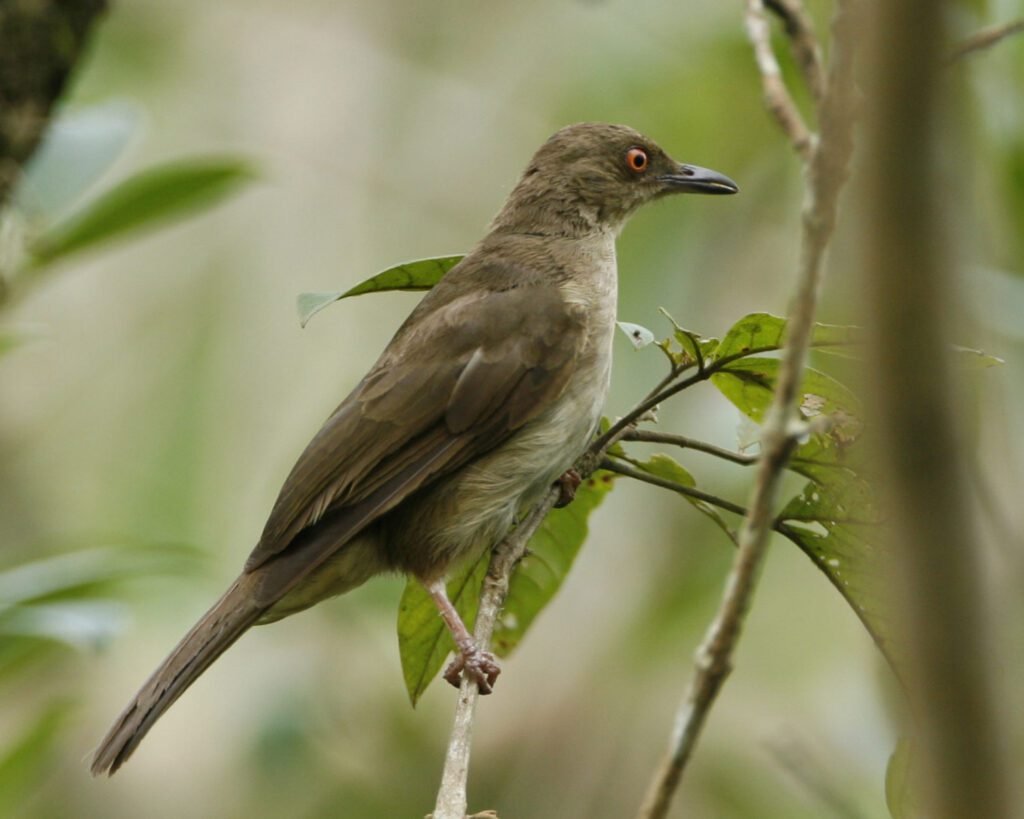

Red-eyed Bulbul
Alterations in Bird Eyes Over Time
As birds mature, their eye color can change from a lighter shade to a deeper red hue. For instance, Juvenile House Finches have dark brown eyes, but their eye color transitions to a vibrant red as they mature. This change in eye color is primarily due to the accumulation of pigments in the iris.
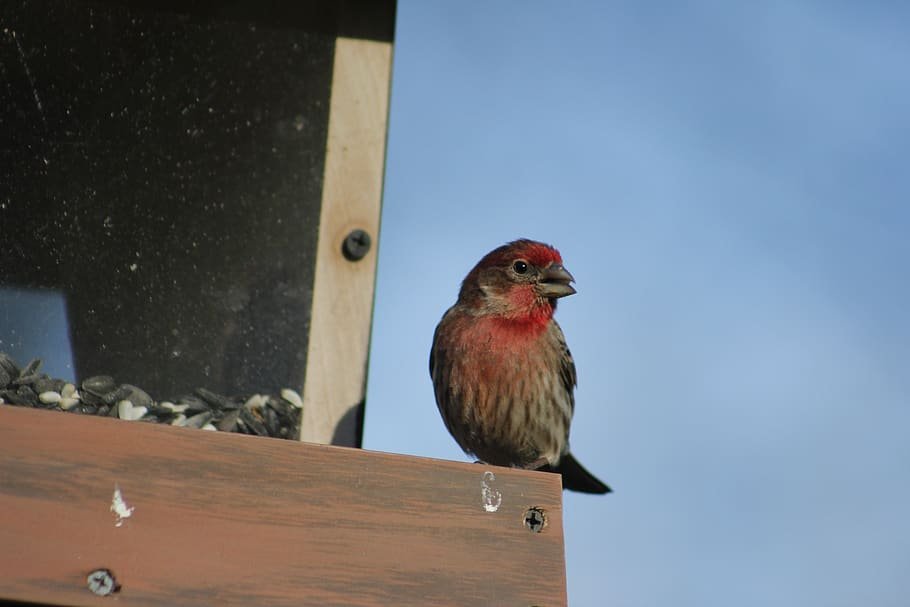

Juvenile House Finches Eyes
Younger birds may have lighter or yellowish eyes, which gradually darken as they age. The intensity of the red color can also vary among different bird species.
The age-related change in eye color is not universal among all bird species. While some birds exhibit a clear correlation between age and eye color, others may not show any noticeable change.
Additionally, the timing of the eye color change can vary between species. Some birds may undergo this transformation within a few months, while others may take several years to develop the characteristic red eyes.
The red color of bird eyes can be influenced by hormonal changes during the breeding season. The difference in eye color results from physiological changes as birds reach sexual maturity.
Conclusion
Nature’s palette is vast and varied, with the red eyes of specific bird species being a fascinating instance of this diversity. This unique feature is more than just about aesthetics; it’s a reminder that every species, every organism, has its amazing story to tell. For bird enthusiasts, such knowledge deepens your understanding and connection with these beautiful creatures.
![Why Do Some Birds Have Red Eyes? [EXPLAINED]](https://petsfm.com/wp-content/uploads/2023/09/Why-Do-Some-Birds-Have-Red-Eyes-960x541.jpg)


